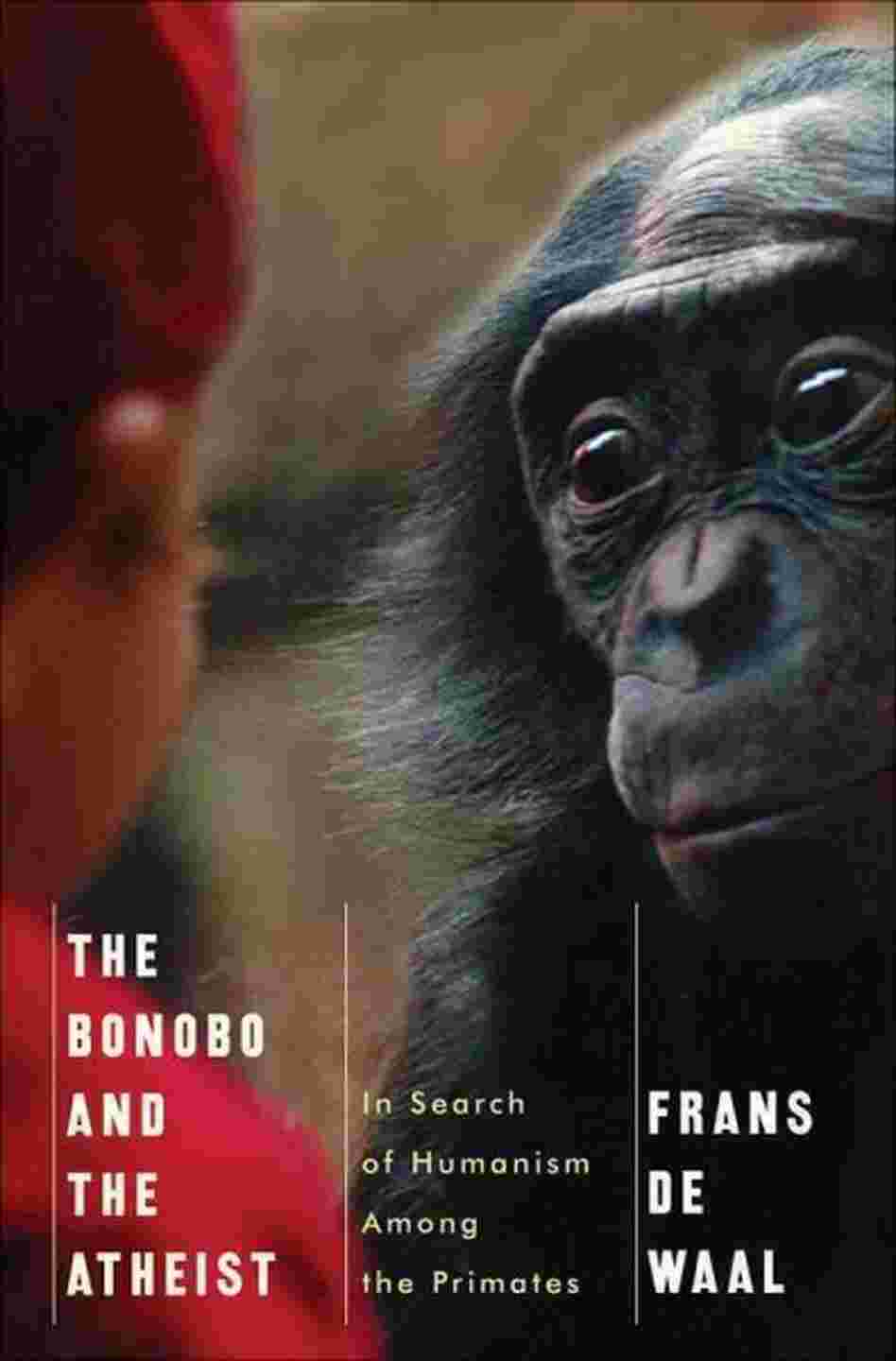
Associated Press
A herd of African elephants drink water at a dam inside the Addo Elephant National Park near Port Elizabeth, South Africa.
Who is smarter: a person or an ape? Well, it depends on the task. Consider Ayumu, a young male chimpanzee at Kyoto University who, in a 2007 study, put human memory to shame. Trained on a touch screen, Ayumu could recall a random series of nine numbers, from 1 to 9, and tap them in the right order, even though the numbers had been displayed for just a fraction of a second and then replaced with white squares.
I tried the task myself and could not keep track of more than five numbers—and I was given much more time than the brainy ape. In the study, Ayumu outperformed a group of university students by a wide margin. The next year, he took on the British memory champion Ben Pridmore and emerged the "chimpion."
How do you give a chimp—or an elephant or an octopus or a horse—an IQ test? It may sound like the setup to a joke, but it is actually one of the thorniest questions facing science today. Over the past decade, researchers on animal cognition have come up with some ingenious solutions to the testing problem. Their findings have started to upend a view of humankind's unique place in the universe that dates back at least to ancient Greece.
Aristotle's idea of the scala naturae, the ladder of nature, put all life-forms in rank order, from low to high, with humans closest to the angels. During the Enlightenment, the French philosopher René Descartes, a founder of modern science, declared that animals were soulless automatons. In the 20th century, the American psychologist B.F. Skinner and his followers took up the same theme, painting animals as little more than stimulus-response machines. Animals might be capable of learning, they argued, but surely not of thinking and feeling. The term"animal cognition" remained an oxymoron.
A growing body of evidence shows, however, that we have grossly underestimated both the scope and the scale of animal intelligence. Can an octopus use tools? Do chimpanzees have a sense of fairness? Can birds guess what others know? Do rats feel empathy for their friends? Just a few decades ago we would have answered "no" to all such questions. Now we're not so sure.
Experiments with animals have long been handicapped by our anthropocentric attitude: We often test them in ways that work fine with humans but not so well with other species. Scientists are now finally meeting animals on their own terms instead of treating them like furry (or feathery) humans, and this shift is fundamentally reshaping our understanding.
Elephants are a perfect example. For years, scientists believed them incapable of using tools. At most, an elephant might pick up a stick to scratch its itchy behind. In earlier studies, the pachyderms were offered a long stick while food was placed outside their reach to see if they would use the stick to retrieve it. This setup worked well with primates, but elephants left the stick alone. From this, researchers concluded that the elephants didn't understand the problem. It occurred to no one that perhaps we, the investigators, didn't understand the elephants.
Think about the test from the animal's perspective. Unlike the primate hand, the elephant's grasping organ is also its nose. Elephants use their trunks not only to reach food but also to sniff and touch it. With their unparalleled sense of smell, the animals know exactly what they are going for. Vision is secondary.
But as soon as an elephant picks up a stick, its nasal passages are blocked. Even when the stick is close to the food, it impedes feeling and smelling. It is like sending a blindfolded child on an Easter egg hunt.
What sort of experiment, then, would do justice to the animal's special anatomy and abilities?
On a recent visit to the National Zoo in Washington, I met with Preston Foerder and Diana Reiss of Hunter College, who showed me what Kandula, a young elephant bull, can do if the problem is presented differently. The scientists hung fruit high up above the enclosure, just out of Kandula's reach. The elephant was given several sticks and a sturdy square box.
Kandula ignored the sticks but, after a while, began kicking the box with his foot. He kicked it many times in a straight line until it was right underneath the branch. He then stood on the box with his front legs, which enabled him to reach the food with his trunk. An elephant, it turns out, can use tools—if they are the right ones.
While Kandula munched his reward, the investigators explained how they had varied the setup, making life more difficult for the elephant. They had put the box in a different section of the yard, out of view, so that when Kandula looked up at the tempting food he would need to recall the solution and walk away from his goal to fetch the tool. Apart from a few large-brained species, such as humans, apes and dolphins, not many animals will do this, but Kandula did it without hesitation, fetching the box from great distances.
Another failed experiment with elephants involved the mirror test—a classic evaluation of whether an animal recognizes its own reflection. In the early going, scientists placed a mirror on the ground outside the elephant's cage, but the mirror was (unsurprisingly) much smaller than the largest of land animals. All that the elephant could possibly see was four legs behind two layers of bars (since the mirror doubled them). When the animal received a mark on its body visible only with the assistance of the mirror, it failed to notice or touch the mark. The verdict was that the species lacked self-awareness.
But Joshua Plotnik of the Think Elephant International Foundation modified the test. He gave the elephants access to an 8-by-8-foot mirror and allowed them to feel it, smell it and look behind it. With this larger mirror, they fared much better. One Asian elephant recognized herself. Standing in front of the mirror, she repeatedly rubbed a white cross on her forehead, an action that she could only have performed by connecting her reflected image with her own body.
A similar experimental problem was behind the mistaken belief, prevalent until two decades ago, that our species has a unique system of facial recognition, since we are so much better at identifying faces than any other primate. Other primates had been tested, but they had been tested on human faces—based on the assumption that ours are the easiest to tell apart.
When Lisa Parr, one of my co-workers at Emory University, tested chimpanzees on portraits of their own species, they excelled at it. Selecting portraits on a computer screen, they could even tell which juveniles were born to which females. Having been trained to detect similarities among images, the apes were shown a female's portrait and then given a choice between two other faces, one of which showed her offspring. They preferred the latter based purely on family resemblance since they did not know any of the depicted apes.
We also may need to rethink the physiology of intelligence. Take the octopus. In captivity, these animals recognize their caretakers and learn to open pill bottles protected by childproof caps—a task with which many humans struggle. Their brains are indeed the largest among invertebrates, but the explanation for their extraordinary skills may lie elsewhere. It seems that these animals think, literally, outside the box of the brain.
Octopuses have hundreds of suckers, each one equipped with its own ganglion with thousands of neurons. These "mini-brains" are interconnected, making for a widely distributed nervous system. That is why a severed octopus arm may crawl on its own and even pick up food.
Similarly, when an octopus changes skin color in self-defense, such as by mimicking a poisonous sea snake, the decision may come not from central command but from the skin itself. A 2010 study found gene sequences in the skin of cuttlefish similar to those in the eye's retina. Could it be: an organism with a seeing skin and eight thinking arms?
A note of caution, however: At times we also have overestimated the capacities of animals. About a century ago, a German horse named "Kluger Hans" (Clever Hans) was thought to be capable of addition and subtraction. His owner would ask him the product of multiplying four by three, and Hans would happily tap his hoof 12 times. People were flabbergasted, and Hans became an international sensation.
That is, until Oskar Pfungst, a psychologist, investigated the horse's abilities. Pfungst found that Hans was only successful if his owner knew the answer to the question and was visible to the horse. Apparently, the owner subtly shifted his position or straightened his back when Hans reached the correct number of taps. (The owner did so unknowingly, so there was no fraud involved.)
Some look at this historic revelation as a downgrading of Hans's intelligence, but I would argue that the horse was in fact very smart. His abilities at arithmetic may have been flawed, but his understanding of human body language was remarkable. And isn't that the skill a horse needs most?
Awareness of the "Clever Hans Effect," as it is now known, has greatly improved animal experimentation. Unfortunately, it is often ignored in comparable research with humans. Whereas every dog lab now tests the cognition of its animals while their human owners are blindfolded or asked to face away, young children are still presented with cognitive tasks while sitting on their mothers' laps. The assumption is that mothers are like furniture, but every mother wants her child to succeed, and nothing guarantees that her sighs, head turns and subtle changes in position don't serve as cues for the child.
This is especially relevant when we try to establish how smart apes are relative to children. To see how their cognitive skills compare, scientists present both species with identical problems, treating them exactly the same. At least this is the idea. But the children are held by their parents and talked to ("Watch this!" "Where is the bunny?"), and they are dealing with members of their own kind. The apes, by contrast, sit behind bars, don't benefit from language or a nearby parent who knows the answers, and are facing members of a different species. The odds are massively stacked against the apes, but if they fail to perform like the children, the invariable conclusion is that they lack the mental capacities under investigation.
A recent study, tracking the pupil movements of chimpanzees, found that they followed the gaze of members of their own species far better than that of humans. This simple finding has huge implications for tests in which chimpanzees need to pay attention to human experimenters. The species barrier they face may fully explain the difference in performance compared with children.
Underlying many of our mistaken beliefs about animal intelligence is the problem of negative evidence. If I walk through a forest in Georgia, where I live, and fail to see or hear the pileated woodpecker, am I permitted to conclude that the bird is absent? Of course not. We know how easily these splendid woodpeckers hop around tree trunks to stay out of sight. All I can say is that I lack evidence.
It is quite puzzling, therefore, why the field of animal cognition has such a long history of claims about the absence of capacities based on just a few strolls through the forest. Such conclusions contradict the famous dictum of experimental psychology according to which "absence of evidence is not evidence of absence."
Take the question of whether we are the only species to care about the well-being of others. It is well known that apes in the wild offer spontaneous assistance to each other, defending against leopards, say, or consoling distressed companions with tender embraces. But for decades, these observations were ignored, and more attention was paid to experiments according to which the apes were entirely selfish. They had been tested with an apparatus to see if one chimpanzee was willing to push food toward another. But perhaps the apes failed to understand the apparatus. When we instead used a simple choice between tokens they could exchange for food—one kind of token rewarded only the chooser, the other kind rewarded both apes—lo and behold, they preferred outcomes that rewarded both of them.
Such generosity, moreover, may not be restricted to apes. In a recent study, rats freed a trapped companion even when a container with chocolate had been put right next to it. Many rats first liberated the other, after which both rodents happily shared the treat.
The one historical constant in my field is that each time a claim of human uniqueness bites the dust, other claims quickly take its place. Meanwhile, science keeps chipping away at the wall that separates us from the other animals. We have moved from viewing animals as instinct-driven stimulus-response machines to seeing them as sophisticated decision makers.
Aristotle's ladder of nature is not just being flattened; it is being transformed into a bush with many branches. This is no insult to human superiority. It is long-overdue recognition that intelligent life is not something for us to seek in the outer reaches of space but is abundant right here on earth, under our noses.












